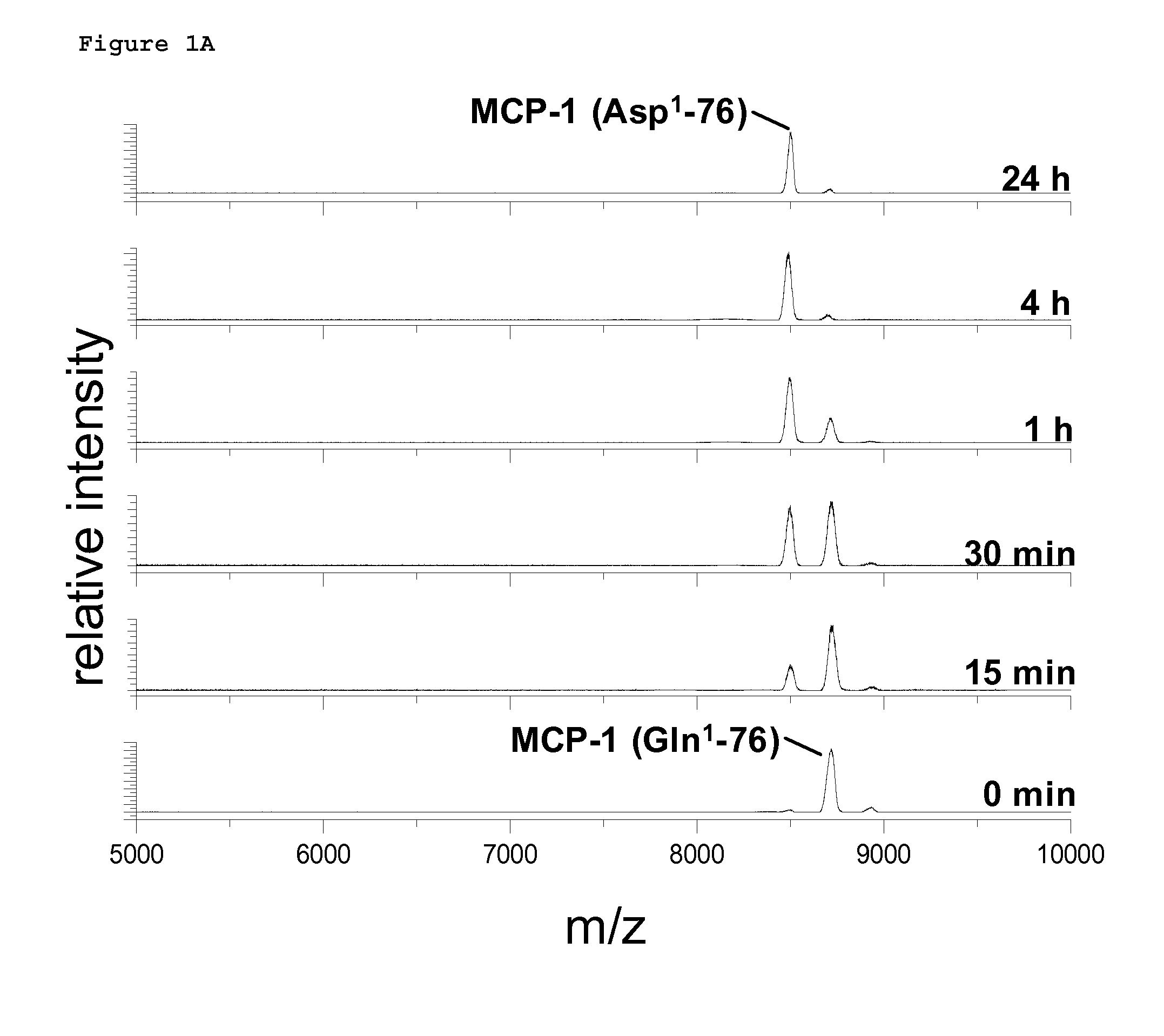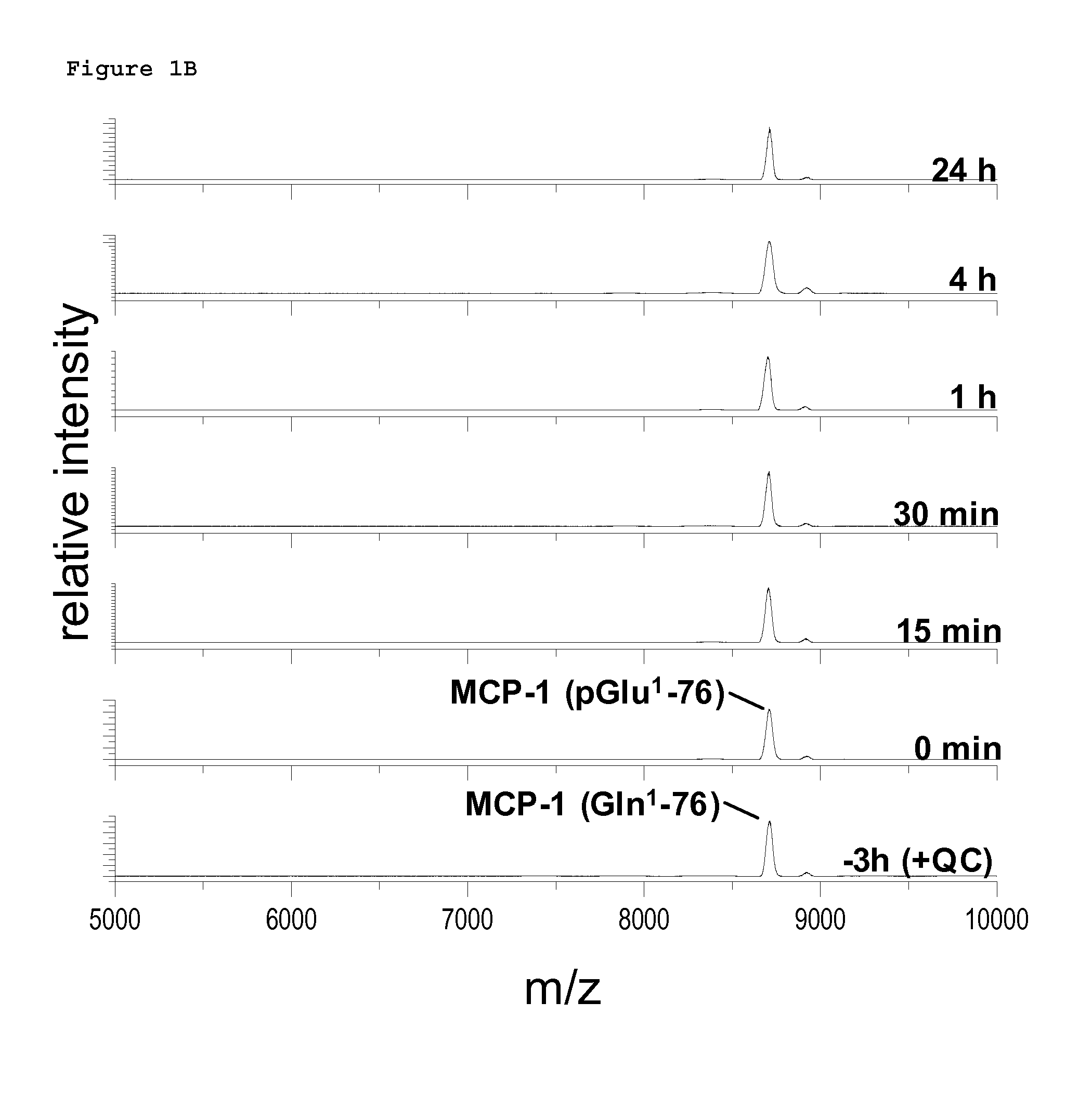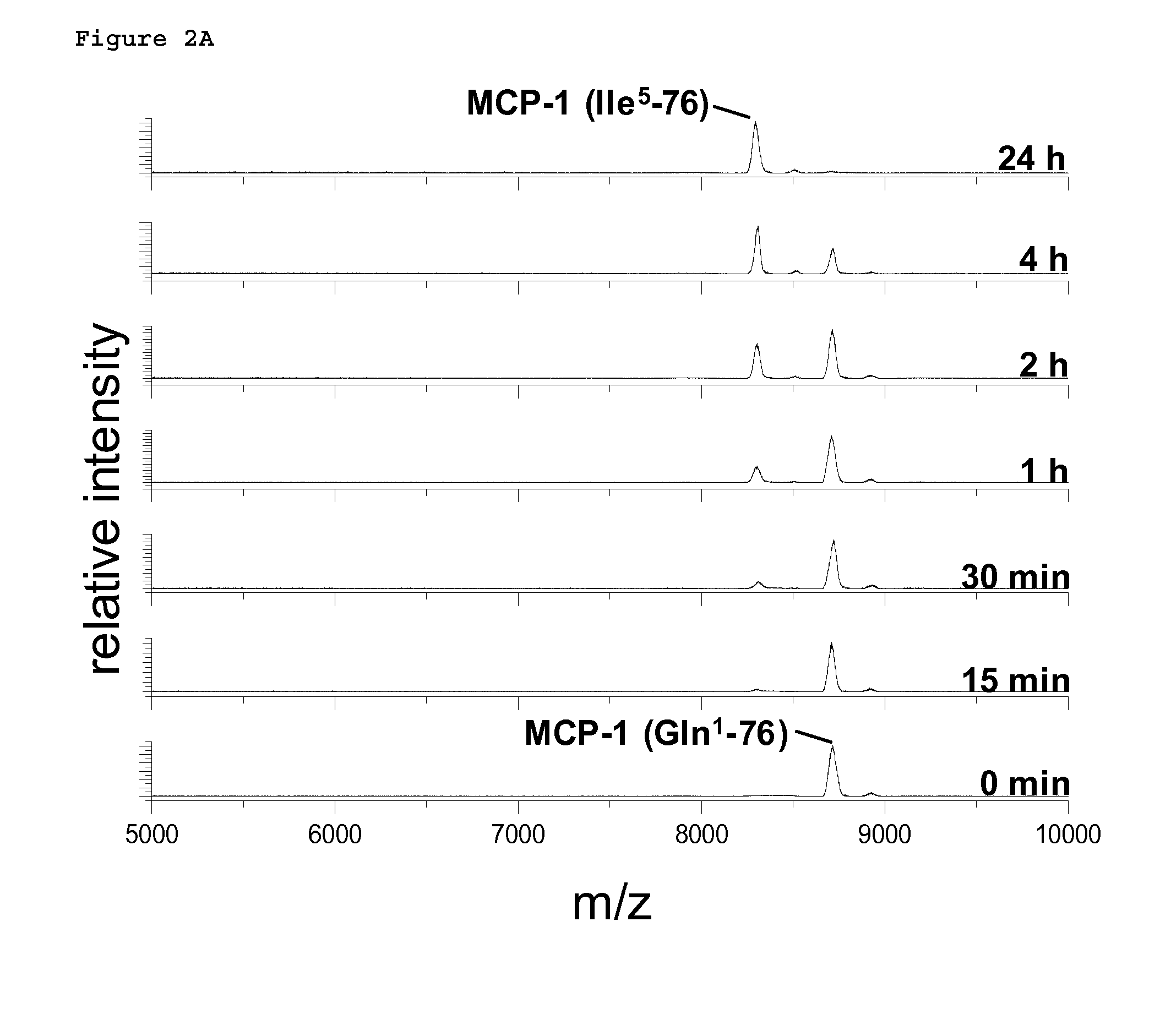Methods of treating or preventing an inflammatory disease or condition using glutaminyl cyclase inhibitors
a technology of glutaminyl cyclase and inhibitor, which is applied in the direction of biocide, drug composition, instruments, etc., can solve the problems of significant restnosis, post-ptca closure of the vessel, and 500,000-600,000 deaths annually
- Summary
- Abstract
- Description
- Claims
- Application Information
AI Technical Summary
Problems solved by technology
Method used
Image
Examples
reference example 1
Preparation of Human QC
Host Strains and Media
[0439]Pichia pastoris strain X33 (AOX1, AOX2), used for the expression of human QC was grown, transformed and analyzed according to the manufacturer's instructions (Invitrogen). The media required for P. pastoris, i.e. buffered glycerol (BMGY) complex or methanol (BMMY) complex medium, and the fermentation basal salts medium were prepared according to the manufacturer's recommendations.
Molecular Cloning of Plasmid Vectors Encoding the Human QC
[0440]All cloning procedures were done applying standard molecular biology techniques. For expression in yeast, the vector pPICZαB (Invitrogen) was used. The pQE-31 vector (Qiagen) was used to express the human QC in E. coli. The cDNA of the mature QC starting with codon 38 was fused in frame with the plasmid encoded 6xhistidine tag. After amplification utilizing the primers pQCyc-1 and pQCyc-2 (WO 2004 / 098625) and subcloning, the fragment was inserted into the expression vector employing the restric...
reference example 2
MALDI-TOF Mass Spectrometry
[0447]Matrix-assisted laser desorption / ionization mass spectrometry was carried out using the Voyager De-Pro (Applied Biosystems, Darmstadt) with a linear time of flight analyzer. The instrument was equipped with a 337 nm nitrogen laser, a potential acceleration source and a 1.4 m flight tube. Detector operation was in the positive-ion mode. Samples (5 μl) were mixed with equal volumes of the matrix solution. For matrix solution we used sinapinic acid, prepared by solving 20 mg sinapinic acid (Sigma-Aldrich) in 1 ml acetonitrile / 0.1% TFA in water (1 / 1, v / v). A small volume (≈1 μl) of the matrix-analyte-mixture was transferred to a probe tip.
[0448]For long-term testing of Glut-cyclization, Aβ-derived peptides were incubated in 100 μl 0.1 M sodium acetate buffer, pH 5.2 or 0.1 M Bis-Tris buffer, pH 6.5 at 30° C. Peptides were applied in 0.5 mM [αβ3-11a] or 0.15 mM [Aβ3-21a] concentrations, and 0.2 U QC was added all 24 hours. In case of Aβ3-21a, the assays c...
example 4
Proteolytic Degradation of Human MCP-1(1-76) by Dipeptidyl-Peptidase 4 (DP4), Aminopeptidase P, and by Proteases Present in Human Serum
[0465]N-Terminal Degradation by Recombinant Human Aminopeptidase P Human recombinant MCP-1 carrying an N-terminal glutaminyl instead of a pyroglutamyl residue (Peprotech) was dissolved in 25 mM Tris / HCl, pH 7.6 in a concentration of 10 μg / ml. MCP-1 was incubated with 30 μg / ml Aminopeptidase P (R&D Systems) at 30° C. Gln1-MCP-1 was either used without pGlu-modification or was pre-incubated with recombinant human QC (6 μg / ml) for 3 h at 30° C. in order to generate pGlu. Resulting Aminopeptidase P cleavage products were analyzed using Maldi-TOF mass spectrometry after 0 min, 15 min, 30 min, 1 h, 2 h, 4 h and 24 h.
N-Terminal Degradation of MCP-1 by Recombinant Human DP4 in Absence and Presence of a QC-Specific Inhibitor
[0466]Recombinant Human MCP-1(1-76) (SEQ ID NO: 1) encoded by the nucleic acid sequence as shown in SEQ ID NO: 2, obtained in Example 1 a...
PUM
| Property | Measurement | Unit |
|---|---|---|
| body weight | aaaaa | aaaaa |
| pH | aaaaa | aaaaa |
| pore width | aaaaa | aaaaa |
Abstract
Description
Claims
Application Information
 Login to View More
Login to View More - R&D
- Intellectual Property
- Life Sciences
- Materials
- Tech Scout
- Unparalleled Data Quality
- Higher Quality Content
- 60% Fewer Hallucinations
Browse by: Latest US Patents, China's latest patents, Technical Efficacy Thesaurus, Application Domain, Technology Topic, Popular Technical Reports.
© 2025 PatSnap. All rights reserved.Legal|Privacy policy|Modern Slavery Act Transparency Statement|Sitemap|About US| Contact US: help@patsnap.com



